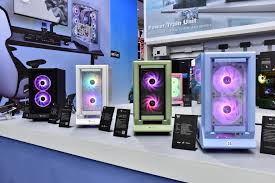Proximity card (or Prox Card) is a generic name for contactless integrated circuit devices used for security access. It can refer to the older 125 kHz devices or the newer 13.56 MHz contactless RFID cards, most commonly known as contactless smartcards. There are also now higher frequency varietion for longer range of applications liked electronic toll system.
Modern proximity cards are covered by the ISO/IEC 14443 (Proximity Card) standard.. Proximity cards are powered by resonant energy transfer and have a range of 0-3 inches in most instances. The price of the cards is also low, usually US$2–$5.
Proximity cards use an LC circuit. An IC, capacitor, and coil are connected in parallel. The card reader presents a field that excites the coil and charges the capacitor, which in turn energizes and powers the IC. The IC then transmits the card number via the coil to the card reader. The card readers communicate in Wiegand protocol that consists of a data 0 and a data 1 circuit. The earliest cards were 26 bit. As demand has increased bit size has increased to continue to provide unique numbers. Often, the first several bits can be made identical; these are called facility or site code. For example, a company Alice has a facility code of xn and a card set of 0001 through 1000 while another company Bob has a facility code of yn and a card set also of 0001 through 1000.

